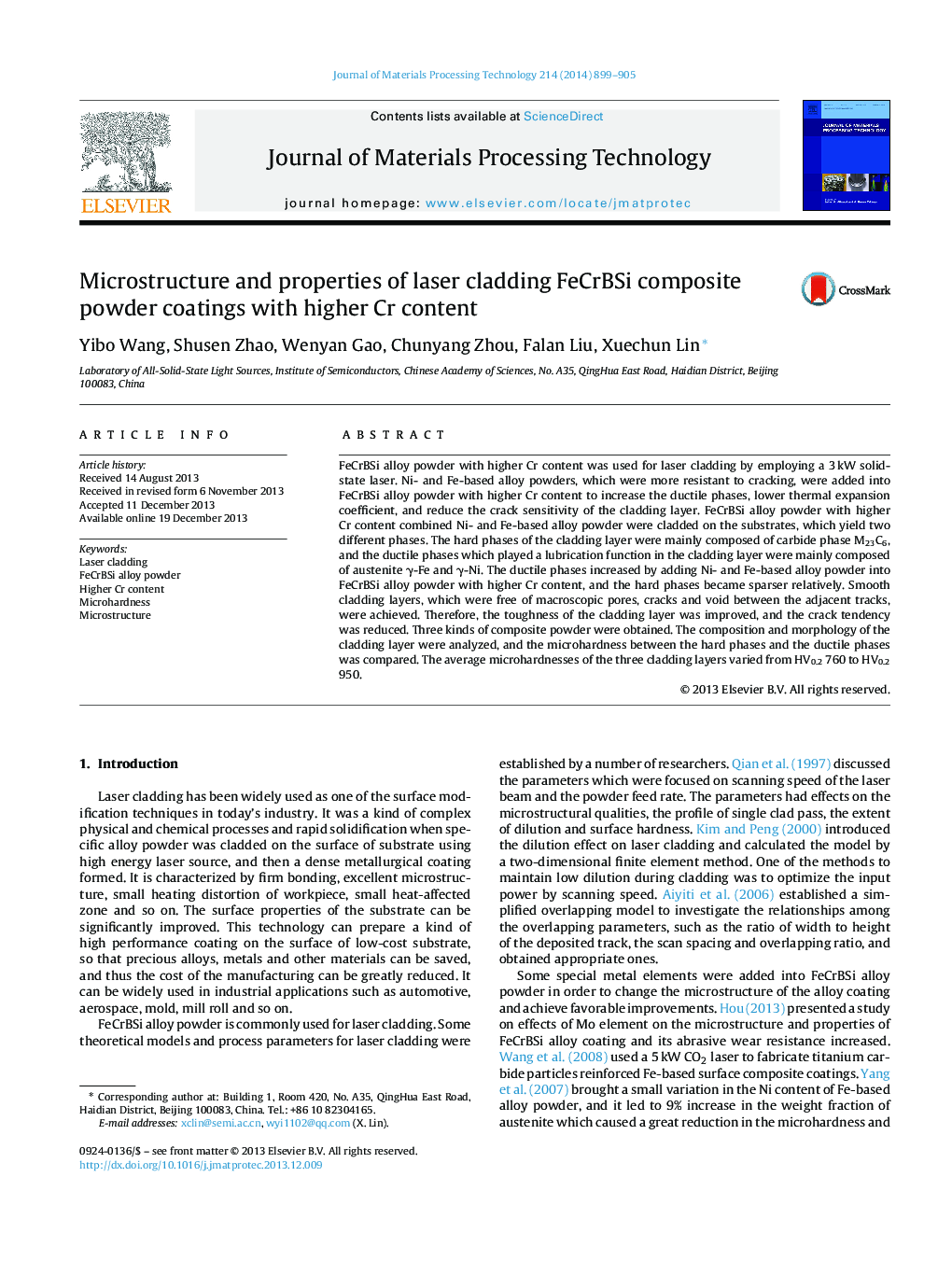| کد مقاله | کد نشریه | سال انتشار | مقاله انگلیسی | نسخه تمام متن |
|---|---|---|---|---|
| 798068 | 903201 | 2014 | 7 صفحه PDF | دانلود رایگان |

• FeCrBSi composite powder coating with higher Cr content was obtained.
• Ductile phases of cladding layer increased by adding Ni45 or Fe901 powder.
• It was consistent with composition obtained from EDS analysis.
• Microhardness of ductile phases and hard phases was compared.
• Smooth cladding layers which were free of pores and cracks were achieved.
FeCrBSi alloy powder with higher Cr content was used for laser cladding by employing a 3 kW solid-state laser. Ni- and Fe-based alloy powders, which were more resistant to cracking, were added into FeCrBSi alloy powder with higher Cr content to increase the ductile phases, lower thermal expansion coefficient, and reduce the crack sensitivity of the cladding layer. FeCrBSi alloy powder with higher Cr content combined Ni- and Fe-based alloy powder were cladded on the substrates, which yield two different phases. The hard phases of the cladding layer were mainly composed of carbide phase M23C6, and the ductile phases which played a lubrication function in the cladding layer were mainly composed of austenite γ-Fe and γ-Ni. The ductile phases increased by adding Ni- and Fe-based alloy powder into FeCrBSi alloy powder with higher Cr content, and the hard phases became sparser relatively. Smooth cladding layers, which were free of macroscopic pores, cracks and void between the adjacent tracks, were achieved. Therefore, the toughness of the cladding layer was improved, and the crack tendency was reduced. Three kinds of composite powder were obtained. The composition and morphology of the cladding layer were analyzed, and the microhardness between the hard phases and the ductile phases was compared. The average microhardnesses of the three cladding layers varied from HV0.2 760 to HV0.2 950.
Journal: Journal of Materials Processing Technology - Volume 214, Issue 4, April 2014, Pages 899–905